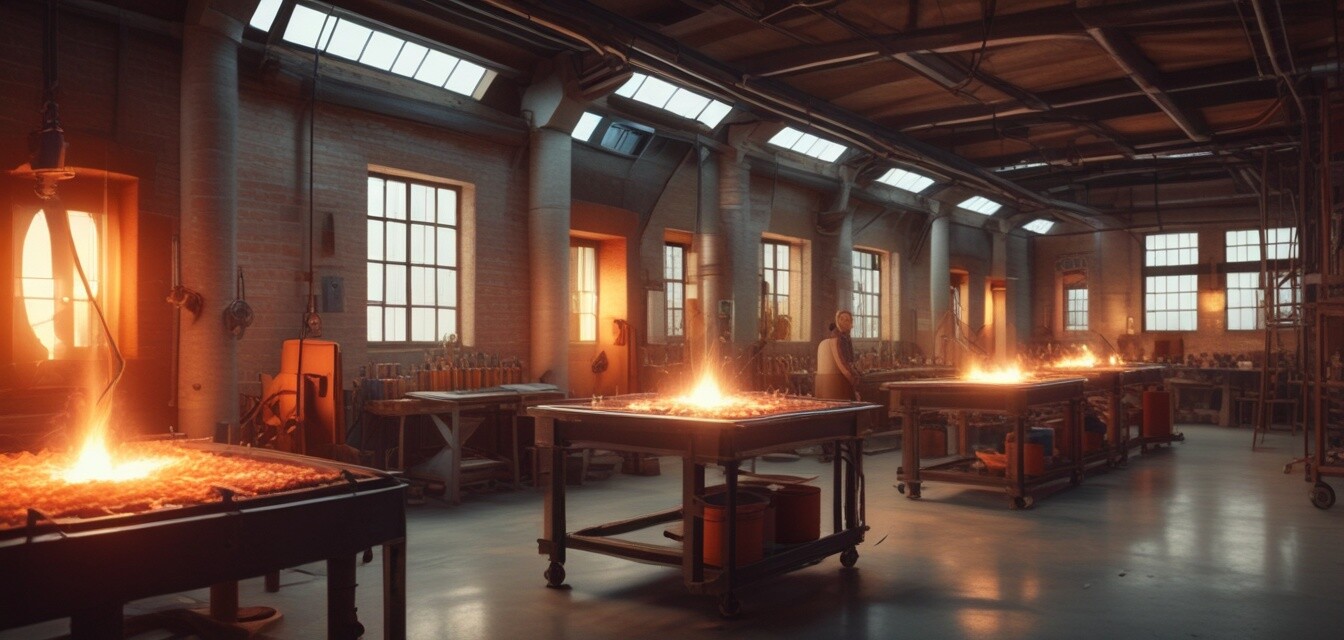
Advanced Techniques for Kiln Maintenance
- Regular cleaning enhances the performance of your kiln.
- Proper insulation helps in energy efficiency.
- Routine check-ups can prevent major malfunctions.
- Understanding your kiln's components is essential for targeted maintenance.
- Utilize the right tools to prolong kiln life.
Maintaining your glass kiln is fundamental for ensuring that your artistic practices thrive. A well-maintained kiln not only enhances the quality of your glasswork but also extends the life of the equipment. This article covers advanced techniques for kiln maintenance so that your furnace operates at peak performance, allowing your creativity to soar.
Why is kiln maintenance important?
Like any other tool in your glassmaking arsenal, your kiln needs attention. Regular maintenance can lead to:
- Increased energy efficiency
- Longer lifespan of kiln components
- More consistent firing results
- Improved safety while using the kiln
By dedicating time and resources to kiln maintenance, you invest in the longevity of your craftsmanship.
Essential tools for kiln maintenance
Before delving into advanced techniques, it's crucial to equip yourself with the right tools. Here’s a list of essential tools:
- High-temperature gloves
- Air compressor
- Soft brush or vacuum cleaner with a soft brush attachment
- Safety glasses
- Kiln cement and high-temperature caulk
Advanced maintenance techniques
1. Regular cleaning
Cleaning your kiln after every few uses can prevent the build-up of dust, glass residue, and other materials. Here’s a brief overview of how to clean different parts:
| Part | Cleaning Method |
|---|---|
| Interior | Use a soft brush or vacuum to gently remove debris. |
| Elements | Wipe down with a damp cloth; never use abrasive materials. |
| Exterior | Clean with a damp cloth and mild detergent. |
2. Insulation check
Inspect the insulation of your kiln regularly. Damaged or deteriorated insulation can lead to energy loss. Look for:
- Cracks or breaks in insulation material
- Signs of wear near kiln door
- Heat escaping from seams
3. Vigilance on components
Stay informed about the various components of your kiln. Knowing how they function can aid in identifying performance issues. Key components include:
- Heating elements
- Thermocouples
- Control boards
- Firing software settings
4. Routine check-ups
Implement a schedule for routine check-ups on your kiln's condition. Here are some steps to follow:
- Inspect for electrical fraying and loose connections.
- Calibrate your kiln according to the manufacturer’s instructions.
- Replace worn out or damaged components immediately.
- Keep a log of maintenance activities and any noted issues.
5. Using the right materials
When performing any repairs or maintenance, always use kiln-specific materials like:
- Kiln cement for sealing
- High-temperature caulk for insulation repair
- Firing paper to protect kiln shelves
Tips for beginners
- Always follow manufacturer guidelines for maintenance.
- Take a kiln safety course if available.
- Don’t hesitate to reach out to experienced glass artists for advice.
Pros
- Increased lifespan of the kiln
- Better overall performance and efficiency
- Safer operation during glass making processes
Cons
- Time-consuming process if neglected
- May require additional costs for repair materials
- Requires attention to various components
Final thoughts
Advanced kiln maintenance may seem overwhelming at first, but it's an essential practice for any serious glass artist. By incorporating these techniques into your routine, you can ensure that your kiln operates efficiently, prolonging its life and enhancing your creative outputs. To learn more about kilns and their maintenance, check out our other articles in our Glass Kilns category.
Stay creative and keep your kiln in top shape!

